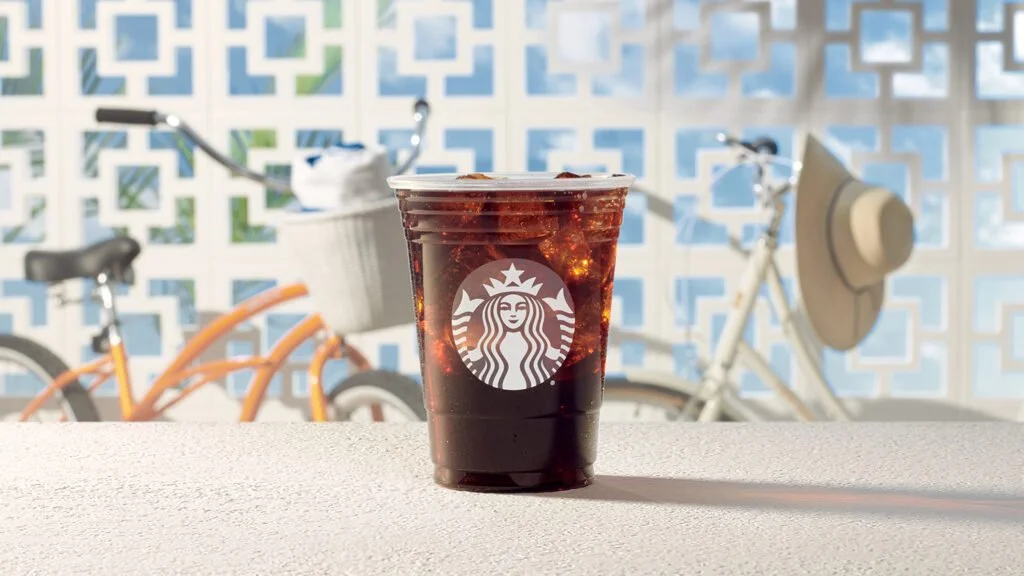SBUX | Q3 2024
The content provided on this website, including any communications, posts, videos, social media interactions, and other materials, is for informational and educational purposes only. It should not be considered as financial or investment advice. Read our full disclaimer here.
Links
Link to Transcript
Link to 10-Q
Overview
Non-GAAP EPS of $0.93 in-line.
Revenue of $9.1B misses by $150M.
Takeaways
In Q3 2024, Starbucks delivered a mixed but better-than-expected set of results.
The company's revenue rose slightly by 1% year-over-year (YoY) and 6% quarter-over-quarter (QoQ), largely driven by an 8% increase in net new company-operated stores.
However, this growth was impacted by a 3% decline in global comparable store sales, which resulted from a 5% drop in transactions, even as the average ticket price increased by 2%.
Regarding global comps, North America experienced a 2% drop, while China faced a steeper 14% decrease, showcasing the diverse challenges Starbucks encounters across different markets. The bright spot in all of this was Japan, where strong performance helped mitigate some of the global downturn.
Financially, Starbucks saw a contraction in operating margins, which shrank by 70 basis points to 16.7%, underscoring the cost pressures the company is navigating. Nonetheless, the company managed to deliver an earnings per share (EPS) of $0.93, a step-up from the previous quarter, reflecting its ability to maintain profitability in a difficult environment.
Starbucks has not been passive in the face of these challenges and is active in controlling what it can. The company is actively implementing a three-part action plan aimed at revitalizing its U.S. business.
This plan focuses on improving store operations, launching new and exciting products, and ensuring that every customer feels the Starbucks experience is worth the price.
It’s worth noting that the company reported positive momentum in core store health metrics, such as better scheduling for partners, reduced turnover, and improved inventory management.
Stores ranked in the top two operational performance quartiles saw a significant 28% improvement from the previous quarter. Additionally, there was a significant reduction in customer complaints about service speed (a sore spot from the previous quarter’s earnings report), indicating that the company's operational improvements are showing results.
A key component of these enhancements is the introduction of Phase 1 of the Siren Craft systems. This includes new roles, increased partner hours, and updated beverage preparation processes.
The early deployment across 1,200 stores showed improvements in key metrics, leading Starbucks to work on fully implementing these changes across all U.S. company-operated stores. Looking ahead, the company plans to roll out enhancements to espresso machines, expected to boost throughput (the speed at which they can serve customers) by up to 15% without compromising quality.
Growth still remains a priority for Starbucks, as evidenced by its accelerated pace of new store builds and renovations. The company plans to open 580 new stores and renovate over 800 existing stores in North America by the end of the year, focusing particularly on Tier-2 and Tier-3 cities.
These areas are seen as ripe for growth, offering underserved demand and high incremental growth potential. Additionally, Starbucks is expanding its partnership with Gopuff to open 100 delivery-only kitchens across the U.S., which could be a strategic move to capitalize on the want for more convenience and delivery options.
In terms of product performance, cold beverages continued to dominate, making up 76% of the beverage mix — a 1% increase YoY. The Cold Espresso platform was a standout, growing by 4%.
Additionally, the launch of the Summer-Berry Starbucks Refreshers with Pearls achieved the highest week-one sales in the company's history, pushing the Refreshers platform to a record high for the quarter.
Starbucks has also made significant strides in enhancing its digital offerings. Improvements to the Starbucks app, including an enhanced wait time algorithm, have significantly boosted order-ready accuracy.
This was one of the big issues from the previous quarter. Issues with the wait time algorithm caused many customers to cancel their orders before picking them up.
These enhancements, combined with targeted in-app offers, have driven a 10% YoY growth in Mobile Order & Pay revenue and a 7% increase in transactions. With these gains, the company noted that only 14% of transactions were driven by offers, compared to a competitor average of 29%.
This is a good sign. Starbucks is viewed as a premium brand, and an over-dependence on deals/discounts would dilute the premiumization of the brand. This is something they’ll hopefully continue to stay mindful of.
Regarding China, the situation is still fuzzy, with the company facing cautious consumer spending and intensified competition. Despite these challenges, Starbucks reported improvements in key metrics, such as average daily transactions and operating margins.
The Starbucks Rewards program in China continues to thrive, with 1.6 million new members added, bringing the total to a record 22 million. Additionally, partner turnover reached a new low, indicating strong employee engagement in a tough market.
Finally, Starbucks acknowledged the involvement of activist investor Elliott Management, describing their interactions so far as constructive. This development suggests that Starbucks is open to dialogue and potential changes, which could be beneficial in navigating a potentially tricky situation.
Overall, Starbucks' Q3 2024 earnings report paints a promising picture of a company that is resilient and adaptive, continuously seeking ways to innovate and improve amidst a challenging economic environment. While there are headwinds, especially in key international markets like China, the company's strategic initiatives and focus on operational improvements provide a strong foundation for future growth.

